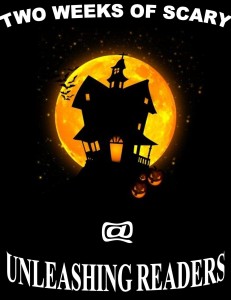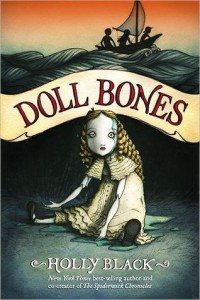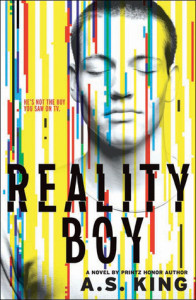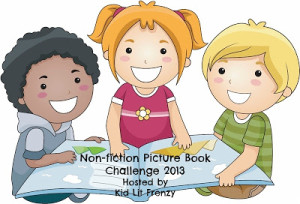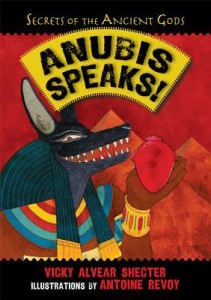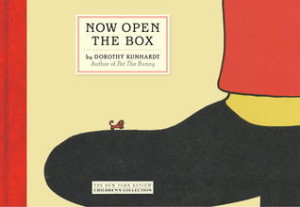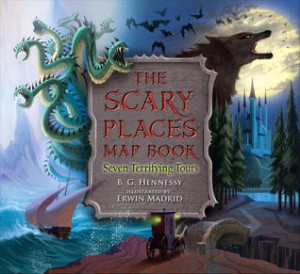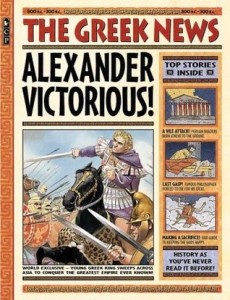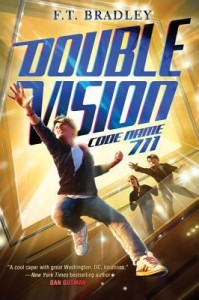
Double Vision: Code Name 711
Author: F. T. Bradley
Published: October 15th, 2013 by HarperCollins
Summary: Twelve-year-old Lincoln Baker isn’t a great student, and he often gets into trouble, but one thing is for sure—he is a great spy. In his last adventure, Linc went on an undercover mission in Paris and saved the world, but this time, Washington D.C. needs his help. A dark car pulls up to his road, and Pandora tells him they need his help. The president and her family have received a death threat, and they need Linc to help save her life. Worse, George Washington’s coat, which is believed to protect the wearer from harm is missing. Unfortunately for Lincoln, his doppelganger, Ben Green is also asked to help with the mission, and Lincoln wants to solve the crime first.
Review: Readers will enjoy this adventure through Washington D.C. and learn about the different museums and pieces of America’s history. Linc’s journey is action-packed and is sure to engage reluctant readers. I was actually visiting Washington D.C. while I read this book, so it was fun for me to learn more about the museums as I visited them. I haven’t read the first book in this series yet, but I was able to follow along with the details of this second book very easily. I enjoyed the hooks at the end of each chapter and was engaged in this detective story.
Teacher’s Tools for Navigation: Middle school students will have a lot of fun with this book. I’d love to see it in American history classes, where teachers might use the book side-by-side with units about our history. Many schools take field trips to Washington D.C., and this would make for a great read-aloud on the bus ride! Or perhaps, teachers might assign it as required reading for the trip. As another alternative, teachers might make a Webquest for students to learn more about our country’s history as they read this book. The great foreshadowing at the end of chapters would be great to teach students how to make predictions.
Discussion Questions: How do 12-year-olds make for great spies?; Why does Linc’s nemesis, Ben Green, play an important role in the story?; Which characters were suspicious? Cite reasons why you found each of them to be suspicious.; How does the setting add to the color of the story? Pick a different setting and tell how the story might the story be different if it were in this setting.
We Flagged:
“Agent Stark got out of the car and gave me a little nod. And I knew my gut was spot-on: Pandora was back.
I got off my board and carried it as I walked toward her. ‘Hey, Agent Stark. You must be here for my mom’s spaghetti dinner'” (Chapter 1).
Please note: The above quote is from the Advanced Reader Copy. The quote may change when the book is published.
Read This If You Loved: The 39 Clues series published by Scholastic, Artemis Fowl by Eoin Colfer, The Alex Rider series by Anthony Horowtz, or detective/spy middle grade novels
Recommended For:


Interview with F.T. Bradley!

Websites: www.ftbradley.com and www.doublevisionbooks.com
Twitter: @FTBradleyAuthor
How did you become interested in writing detective/spy novels?
I’ve always loved mysteries, from when I was young, and was given an Enid Blyton Secret Seven paperback. When I was a kid, there wasn’t a YA section in my library, so I moved on to Agatha Christie novels after that. I love the puzzle in mysteries. My interest in all things spy didn’t come until later, when I watched movies like Sneakers. Spies are cool.
When did this story come to you? When did you realize that you wanted it to be a series?
The Double Vision trilogy really started with Linc: what if a regular kid (and a troublemaker with a sense of humor to boot) had to take the place of a lookalike spy? Linc really drives the story; when I sit down to write, I just let him take a run with it and hope for the best. So far, the story is a hit with kids—but that’s all Linc, I swear.
Some of the stories developed as I worked with my agent and editor, once it was sold to Harper Children’s as a three-book series. For the second book, Double Vision: Code Name 711, we started with the Washington D.C. location, which is the center of the spy world. From there, I began researching George Washington, since Linc would be on the hunt for a mysterious double of Washington’s coat.
Once I found out George Washington was a spy, the pieces just fell into place. The history of Washington as having the code name 711 in the Culper Ring during the Revolutionary War is just so awesome, it fueled Double Vision: Code Name 711 from there.
Tell us a little bit about your writing process.
For each book in the Double Vision trilogy, I usually start with a cool location (like Paris for the first book, Washington D.C. for the second), and then try to think of an interesting historical figure and magical artifact. Next, I’ll think of my bad guy/lady: who is the antagonist, and what is at stake? Since it’s a thriller I’m writing, I try to make the stakes as high as I can. I’m putting Linc’s life on the line on these missions after all.
Once I have those elements nailed down, I plot the book as best as I can, trying to think of the most daring things Linc can do on his quest. Like jumping from an airplane onto the Eiffel Tower’s gardens in the first book.
And once that plot gets the thumbs up from my editor, I start writing, and brace myself for what Linc will do. I never quite know, and that’s the best part. Linc is a cool and funny dude.
How did you settle on Lincoln’s age for your book? Did you always know it would be a middle-grade book?
Linc is twelve, which is a solid age for middle-grade. It’s important that he’s not too old, but not so young that he can’t go on his missions.
From the start, I wanted the Double Vision books to appeal to reluctant readers, especially boys who might give up on reading by the time they hit the double digit birthdays. Although I love award-winning children’s books, mysteries and thrillers kind of get forgotten, or are looked at as less somehow. I want to write MG thrillers that mirror the great books written for adults, those that hit the bestseller list because they’re entertaining, moving, sweep you away on a mysterious quest. I want kids to read for fun, and keep reading into adulthood. It’s important that this type of reading—reading for entertainment, whatever the book is—gets more respect.
What were your favorite books as a child and middle schooler?
I was a huge Roald Dahl fan–the BFG was my favorite book. Pippi Longstocking I loved because she did exactly what she wanted. Once I hit middle-school, I moved to the Agatha Christies. As a kid, I loved going to the library, and devoured books.
During my teens, I became a bit of a reluctant reader. There was so much required reading (I grew up in Europe, where there’s a lot of it in high school), and I stopped reading for fun. It wasn’t until my mid-twenties that I got back to reading when someone gave me a paperback thriller. That reignited the passion for books in me, and eventually I worked on writing them (for many years…).
You could say I came full circle: I’m now back at my library every week, leaving with a stack of books.
What are your current favorite middle grade or young adult books?
I’m all over the place with my reading… In MG, I recently loved Wonder, and Eion Colfer’s latest The Reluctant Assassin. In YA, I loved Rat Life by Tedd Arnold, Seconds Away by Harlan Coben.
I’m forgetting titles, I’m sure of it. 🙂 There are so many books, I wish I could just read all day sometimes…
Tell us a little bit about your family.
My husband is in the Air Force, which makes us professional nomads. The cool part about this is that I get to meet new people all the time, and that I have friends all over the globe. My two girls are tweens, and they keep me sharp. My family is so amazingly supportive of my crazy writing career, I thank my lucky stars every day.
Also, I have four cats, so there’s always one to keep me company as I write. The secret to my success is cats, honest.
Is there any reason you chose to use F.T. Bradley instead of Fleur Bradley as the specified author name for your books?
Because the Double Vision books are meant to appeal to boys, we decided to play it safe and go with initials instead of my (sort-of-girly) first name. To be honest, I think I sold today’s boys short. When I do book signings or go on school visits, they couldn’t care less if my hair was green or my name was Bob. We talk about our favorite books, donuts, and what would make a good spy gadget. And the girls join right in.
Kids today are amazing, funny, smart, open-minded, and utterly inspiring in their enthusiasm. They’re why I love to write middle-grade.
Thank you to F.T. Bradley for providing me with a copy of Double Vision: Code Name 711 to review and for this wonderful interview!

